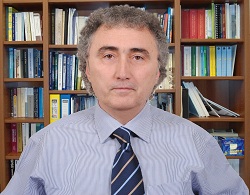ACADEMIA
VENUS-C - Empowering Emergency Crews with the Cloud
When a fire strikes, every second counts
Effective fire management is an essential part of fire-fighting strategies to minimise damage to land, property and loss of life and safeguard the environment. Forest fires are particularly challenging for the south of Europe. Almost 7% of fire ignitions in Portugal, Spain, France, Italy and Greece result in 85% of burnt areas. Even countries like Germany, Belgium and Switzerland experience forest fires. Being able to predict where a fire is most likely to strike is vital during wildfire seasons across the globe. However, spatiotemporal calculations using different geographical datasets often rely on huge computer resources. Civil protection agencies do not typically have these resources or the know-how to operate complex IT systems for seamless fire risk predictions and management.
VENUS-C cloud-powered solution
VENUS-C (Virtual Multidisciplinary Environments Using Cloud Infrastructures – www.venus-c.eu) is addressing these kinds of issues. This pioneering project for the European Commission’s 7th Framework Programme is providing computing resources to relatively small universities and businesses that have big ideas, with the ultimate goal of fostering broader uptake. An innovative approach to using cloud computing for predicting and managing wildfires has been pioneered by Kostas Kalabokidis, a senior geography researcher at the University of the Aegean in Greece.

Professor Kalabokidis and his team have developed a system that uses weather, topography, vegetation data and digital images to predict the spread of forest fires, giving fire fighters a one-hour head start on the blaze. It also provides forecasts of the risk of fires up to five days in advance. Their wildfire prediction application combines Microsoft’s Bing Maps, Microsoft Silverlight (a front-end application for multimedia, graphics, and animation), and Windows Azure, for managing the cloud computing resources at the back end. "Around the world, there are many fire risk algorithms being developed in places like the U.S., Canada, Russia and Southern Europe. What makes our tool different is it provides a quantitative and systematic approach, based on Geographic Information Systems, whereas, for example, Greece’s fire risk scheme is qualitative or empirical based. Our model can predict fire risks at an hourly rate too”, said Kostas Kalabokidis.
Cloud in action - hands-on training for Greek emergency crews
Hands-on training sessions have recently taken place at operational centres in Mytilene (Lesvos) and Thessaloniki, Greece, to show fire-fighting and emergency crews how cloud works in action. “It was an important opportunity to see how cloud computing offers a prompt solution for fire departments tackling wildfires, demonstrating both the operational advantages and cost efficiencies provided by the VENUS-C solution”, said General Vasileios Toulikas of the Greek Fire Brigade in Thessaloniki.
The training focused on the algorithms and data used for the wildfire risk application, where the number of computers needed can be manually selected just by touching icons on a screen, as well as showing service features and operational results for feedback from the trainees. Fire front propagation simulations of past and potential fires were also performed. The fire crews used their workstations to test parallel usage and system response time.
Eye to the future
While the wildfire application is focused on the Lesvos study area, this new service has potential for many other regions across the globe affected by devastating fires. Interest has already come from Russia, which experienced destructive wildfires in summer 2010. “Governments operating this system can plan their actions more efficiently without the need to own, maintain or operate the physical machines used to make complex calculations taking into account the vegetation of an area, topography, socio-economic parameters and, of course, the weather. Emergency crews and support organisations cannot only simulate what’s happening, they can change global and local parameters and perform a ‘what-if’ analysis by changing local weather conditions to predict alternative scenarios. European countries are trying to develop a unified wildfire risk strategy. Our new service can play a part in contributing to this bigger picture”, explained Kostas Kalabokidis.
{modal url=http://www.supercomputingonline.com/images/aegean_real world training_3.jpg} {/modal}
{/modal}
